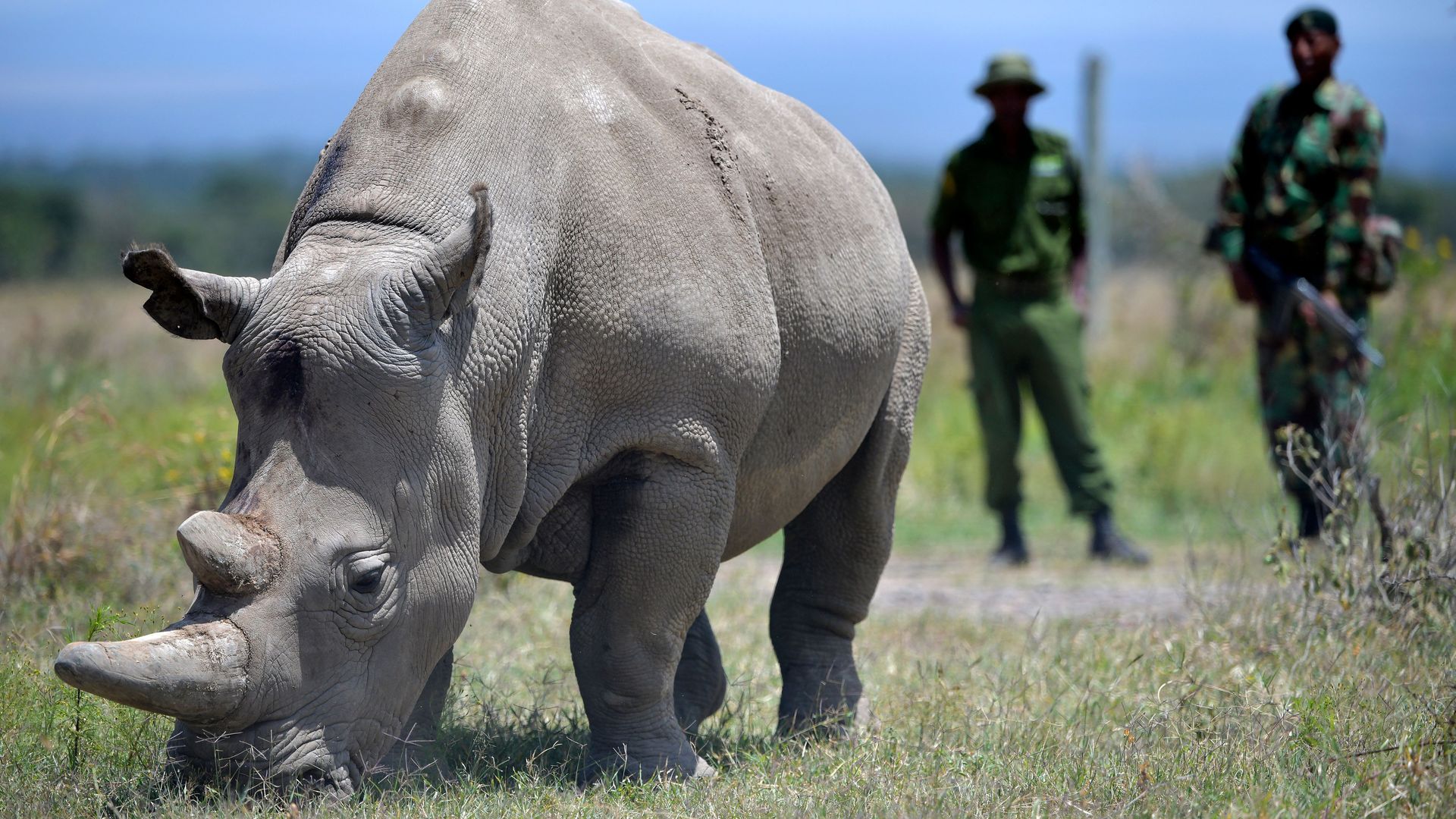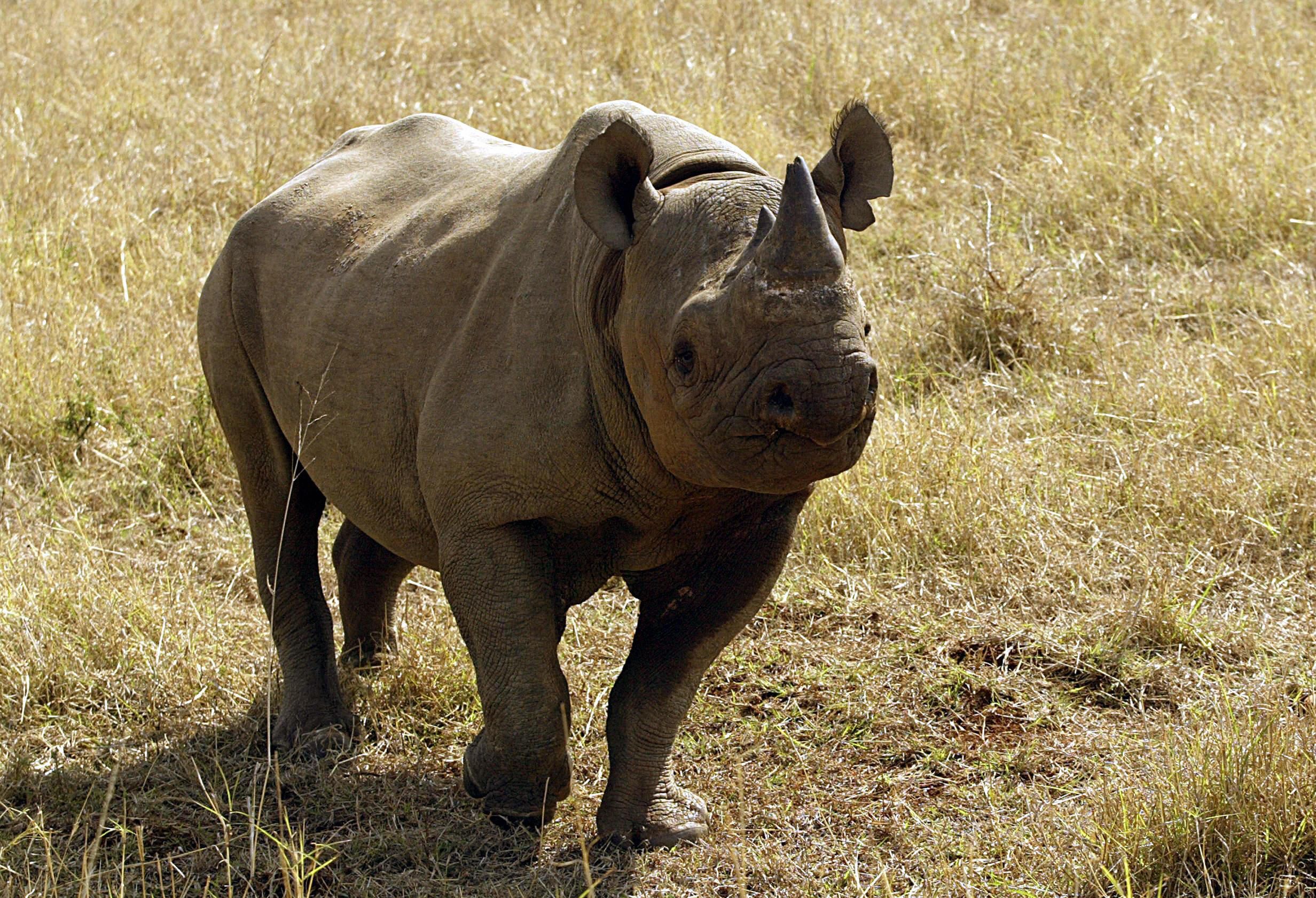

Rhinos have evolved specialist mouths for their different styles of eating. They can be either grazers, mainly eating from the ground or browsers, mainly eating from bushes, shrubs, and trees. Rhinos are herbivores, which eat only plant matter such as grasses, shoots, leaves, fruits, berries, and buds. There are two species of rhino found in various regions of Africa, and three species in regions of Asia. The preferred habitat varies depending on the species, but range from savannas, grassland plains, wetlands, and dense forests in tropical regions. Horn growth – Rhino horns grow as much as 3 in (8 cm) a year, and may grow up to 5 ft (1.5 m) long.
A picture of a rhinoceros skin#

Speed – Despite their great size, rhinos can run very quickly – up to 30 mph (48 kph).Value of Horns – Rhinos are illegally hunted for their horns, which on the black-market sell for the same price as gold on a weight-for-weight basis.Collective Noun – The name for a group of rhinoceroses is a “crash,” or a “herd”.They are also an iconic animal of the countries in which they are found, leading to some interesting facts about the Rhinoceros. Interesting Facts About the Rhinocerosīeing so large, rhinos have evolved several interesting features and characteristics. The two rhino species of Africa are much larger than the three species found in Asia. Rhinos are usually grey, black, or brown (though one species is called the “ white rhino”), and average about 1.5 tons (1360 kg) in weight. The characteristic feature of these animals is a large horn in the middle of their faces some species have a second, smaller horn. They have a robust, cylindrical body with a large head, relatively short legs, and short tail. “ Hawaii Grown” is funded in part by grants from the Ulupono Fund at the Hawaii Community Foundation and the Frost Family Foundation.Rhinos are thought to be the second largest land animal, with the elephant being the largest. If the bags are not in a returnable state, the product should be double-bagged and sealed in heavy-duty trash bags, then left in a sunny spot on concrete for five days, according to a DOA press release.Ĭivil Beat’s coverage of Maui County is supported in part by grants from the Nuestro Futuro Foundation. Members of the public who have recently purchased locally-produced compost from a big-box retailer on Maui can return their purchases or take them to DOA’s Plant Quarantine Inspection office on Maui. In response, the Legislature ponied up approximately $2 million to help alleviate the problem. UH and DOA admitted defeat in early 2023, saying that funding was insufficient to deal with the problem. The department and University of Hawaii have both worked unsuccessfully to eradicate the beetle for years, installing thousands of traps statewide. The DOA is continuing to work alongside mulching and composting companies and retailers to prevent more spread, DOA deputy head Dexter Kishida said in a press release. The beetles breed in green waste, which makes compost and mulch a prime means of transport between Hawaii’s islands. (Courtesy: Hawaii Department of Agriculture)ĭead trees could present a hazard to the public, causing injury or property damage. The remains of the dead coconut rhinoceros beetle found on Maui in a bag of compost.


 0 kommentar(er)
0 kommentar(er)
